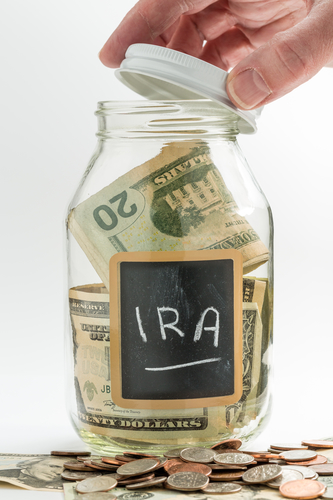 {3:54 minutes to read} In Part 1 of this series, BJ Mann reviewed the three main types of retirement funding. In Part 2, we move on to the important details for the mainstay of the typical retirement plans: 401(k)s (and their sisters) and IRAs in all their permutations. These do not address pensions, which will be discussed in a future post. Of particular interest is the difference between qualified and non-qualified plans, which require different sets of instructions for dividing.
{3:54 minutes to read} In Part 1 of this series, BJ Mann reviewed the three main types of retirement funding. In Part 2, we move on to the important details for the mainstay of the typical retirement plans: 401(k)s (and their sisters) and IRAs in all their permutations. These do not address pensions, which will be discussed in a future post. Of particular interest is the difference between qualified and non-qualified plans, which require different sets of instructions for dividing.
Divorce and 401(k)s and IRAs – Part 2
Divorce and the Defined Contribution Retirement Plan
An employee contribution retirement fund is also called a deferred compensation plan. For simplicity in this post, I use “401(k)” to refer to the main plans in this type:
- A 401(k) is a retirement savings plan sponsored by an employer. It lets workers save and invest a piece of their paycheck before taxes are taken out. Taxes aren’t paid until the money is withdrawn from the account. You control how your money is invested. Most plans offer a range of mutual funds composed of stocks, bonds, and money market investments. There are complex rules about when you can withdraw your money and costly penalties for pulling funds out before retirement age.
- A 403(b) plan is a retirement plan for certain public school employees, employees of tax-exempt organizations and ministers. Individual 403(b) accounts are established and maintained by eligible employees. The employer may determine the financial institution(s) at which individual employees may maintain their 403(b) accounts, which in turn determines the type of 403(b) accounts that the employees may establish and fund.
- The 457 plan is a type of non-qualified, tax-advantaged deferred compensation retirement plan that is available for governmental and certain non-governmental employers. The employer provides the plan and the employee puts part of his or her earnings into it on a pre-tax basis.
Divorce and the Individual Retirement Account (IRA)
An IRA is an account set up at a financial institution that allows an individual to save for retirement with tax-free growth or on a tax-deferred basis. The three main types of IRAs each have different advantages:
- Traditional IRA: You make contributions with money you may be able to deduct on your tax return. Any earnings can potentially grow tax-deferred until you withdraw them in retirement. Many retirees also find themselves in a lower tax bracket than they were in pre-retirement, so the tax-deferral means the money may be taxed at a lower rate when it is withdrawn.
- Roth IRA: You make contributions with money you’ve already paid taxes on (after-tax). Your money may potentially grow tax-free, with tax-free withdrawals in retirement, provided that certain conditions are met.
- Rollover IRA: A Traditional IRA intended for money “rolled over” from a qualified retirement plan. Rollovers involve moving eligible assets from an employer-sponsored plan, such as a 401(k) or 403(b), into an IRA.
In our next installment, we will explore how to divide these plans as part of your divorce settlement.
 BJ Mann
BJ Mann
Divorce • Family • Workplace Mediation
1121 Winton Road South
Rochester NY 14618
Office: 585.234.8740
Web Site: www.bjmediationservices.com


![He Said No to Mediation — and Lost More Than Just Money [VIDEO]](https://divorceandfamilymediationcenter.com/wp-content/uploads/2025/05/1747931592background_0001-500x383.png)
![Bringing Hope and Optimism to Mediation [VIDEO]](https://divorceandfamilymediationcenter.com/wp-content/uploads/2025/04/IMG-Bringing-Hope-and-Optimism-to-Mediation-500x383.png)
![Key Provisions in Every Marital Settlement Agreement [VIDEO]](https://divorceandfamilymediationcenter.com/wp-content/uploads/2025/04/1744321234background_0003-500x383.png)
![Why Boilerplate Language Matters in Your Matrimonial Settlement Agreement [VIDEO]](https://divorceandfamilymediationcenter.com/wp-content/uploads/2025/04/1743629103background_0003-500x383.png)
Leave A Comment